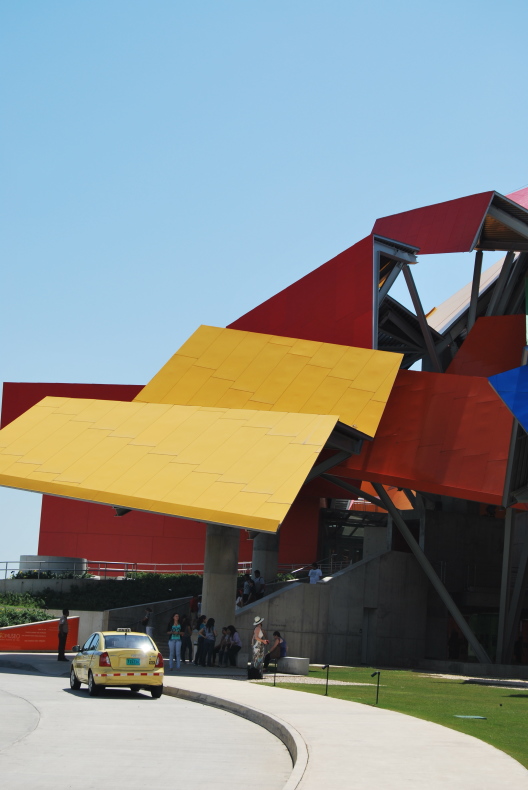 Last weekend, as a part of a much-needed vacation to Colombia, my wife and I took a long layover in Panama City. Also known as “home to that canal that the entire world needs to do business,” Panama City is a lovely town. Lately, people have taken to calling it the Dubai of Latin America because dozens of skyscrapers that have shot up in the last few decades (many of which are nearly empty).
Last weekend, as a part of a much-needed vacation to Colombia, my wife and I took a long layover in Panama City. Also known as “home to that canal that the entire world needs to do business,” Panama City is a lovely town. Lately, people have taken to calling it the Dubai of Latin America because dozens of skyscrapers that have shot up in the last few decades (many of which are nearly empty).
What does one do with half a day in Panama City? If one has a small head, one buys a Panama hat at one of the many tourist shops (however, true Panama hats come from Ecuador). If one has a large head or else already has a hat he likes, one goes to Frank Gehry’s “Biomuseo,” the garish-yet-oddly-hypnotic-and-possibly-soon-to-look-dated science museum overlooking the city.
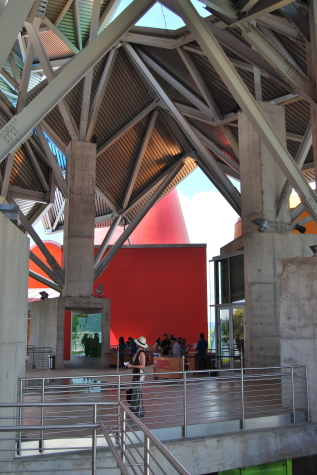 The amazing wealth and rapid development of the city is immediately obvious and its centerpiece has been the Biomuseo. As with any project on such a scale, the $100 million project has been littered with problems caused by changing politics, lack of money, and what Mr. Gehry’s office diplomatically calls the “different cadence” of Panamanian construction practices.
The amazing wealth and rapid development of the city is immediately obvious and its centerpiece has been the Biomuseo. As with any project on such a scale, the $100 million project has been littered with problems caused by changing politics, lack of money, and what Mr. Gehry’s office diplomatically calls the “different cadence” of Panamanian construction practices.
The museum itself is pretty cool despite its design, which was clearly inspired by a pile of discarded party streamers. The tour starts with a bang – an amazing short film titled (by me) Nature Is Really, Like, Awesome, which is shown in a surround-screen theater. After that, it drops off a little. There are some cool rocks and then a roomful of impressive built oddly unpainted statues of prehistoric megafauna. The aquaria don’t have fish yet and the aviary doesn’t have birds. Or, you know, an aviary.
It’s probably not worth the $22 price tag but it’s still pretty cool from a science perspective. The museum’s overall message is simple: Panama is the most important thing that ever happened to the world. It has reshaped the climate, built the polar icecaps, created New World fauna, and sculpted our very bodies!
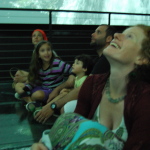
Don’t believe it? Well, neither did I but I soon learned all about it (and then went home and fact-checked). It goes like this. About 15 million years ago, the separate continents of North and South America came into conflict with each other, and their tectonic plates started rubbing each other the wrong way. There were some volcanic disputes, island chains were built, and the cops were called to the house more than once.
The details aren’t important but it had a lot to do with South America’s recent breakup with Antarctica. Eventually, after a few million years of couples counseling and erosion, the two continents used hundreds of cubic miles of sediment to bridge their differences – and the Isthmus of Panama was born. The couple has been together and happy ever since (though they still fight with their neighbor, the Pacific Plate).
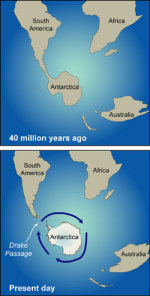 All this happened three to five million years ago. As relieved as the other continents were to see an end to the fighting, the new land bridge required a lot of adjustment. It’s always like this when two continents in a group of friends get together. Antarctica, jilted and pining for South America, wandered south and got really cold and bitter. Africa and Eurasia, which had previously been living a “modern” lifestyle with North America, tried to rekindle their passion but eventually had to bring India into their relationship. And Australia continued on by himself, mostly playing online games and wishing Asia would notice him.
All this happened three to five million years ago. As relieved as the other continents were to see an end to the fighting, the new land bridge required a lot of adjustment. It’s always like this when two continents in a group of friends get together. Antarctica, jilted and pining for South America, wandered south and got really cold and bitter. Africa and Eurasia, which had previously been living a “modern” lifestyle with North America, tried to rekindle their passion but eventually had to bring India into their relationship. And Australia continued on by himself, mostly playing online games and wishing Asia would notice him.
Meanwhile, the Americas were now permanently locked at the lips, making the rest of the world feel awkward. And just as the Antarctica/South America breakup allowed ocean currents to pass between them (now called the Drake Passage) the constant makeout sessions between the Americas blocked other currents that once passed between them.
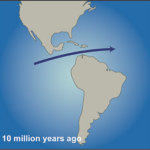 Currents being currents, they had to find a direction to go, so the water went north instead. Thus, the birth of Panama led to the famous ocean conveyor belt that controls the Gulf Stream, weather patterns in the Atlantic, and the global climate. Ice caps formed, monsoons went nuts. The Arctic got wet, Africa got dry, and everyone got a little cooler. North America agreed to put down the toilet seat once in a while but refused to meet South America’s parents.
Currents being currents, they had to find a direction to go, so the water went north instead. Thus, the birth of Panama led to the famous ocean conveyor belt that controls the Gulf Stream, weather patterns in the Atlantic, and the global climate. Ice caps formed, monsoons went nuts. The Arctic got wet, Africa got dry, and everyone got a little cooler. North America agreed to put down the toilet seat once in a while but refused to meet South America’s parents.
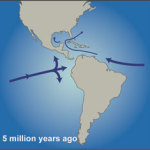 Connecting the two continents also had a huge effect on the tiny creatures living on the continents at the time. In the Americas it was all out war as the marsupial-heavy south clashed with the placental-dominant north during the bland-sounding “Great American Biotic Interchange.” Giant sloth met elephant, saber-tooth met terror bird, and everyone shook hands and politely began killing each other.
Connecting the two continents also had a huge effect on the tiny creatures living on the continents at the time. In the Americas it was all out war as the marsupial-heavy south clashed with the placental-dominant north during the bland-sounding “Great American Biotic Interchange.” Giant sloth met elephant, saber-tooth met terror bird, and everyone shook hands and politely began killing each other.
In the end it was a near sweep for the northerners, which is why there are llamas and tapirs in South America today. Southerners like giant sloths and heavily armored glyptodonts couldn’t hack it for long in the north, though opossums and armadillos did manage to survive and flourish. Meanwhile, elephants, horses and saber-toothed cats from the north ran wild in the south.
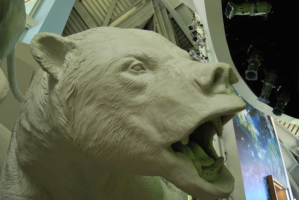 Why the northern animals thumped the southerners is still a matter of debate but one common reason people give was that the northerners benefitted from their continent’s previous plural marriage with Africa and Eurasia. The changing climate certainly played a role. Meanwhile across the ocean, Africa was drying out and a few clever monkeys dropped down from the trees and tried their hand at walking upright on the savanna. Later, those monkeys decided to visit the Americas and ended up killing most of the big animals they found there.
Why the northern animals thumped the southerners is still a matter of debate but one common reason people give was that the northerners benefitted from their continent’s previous plural marriage with Africa and Eurasia. The changing climate certainly played a role. Meanwhile across the ocean, Africa was drying out and a few clever monkeys dropped down from the trees and tried their hand at walking upright on the savanna. Later, those monkeys decided to visit the Americas and ended up killing most of the big animals they found there.
So there you have it. Much of the story, naturally, is up for a lot of debate. For one, there is a lapse between the formation of Panama and the icecaps, which ties into a debate about just how long ago all this happened. Secondly, it’s not clear where all the moisture to build the ice caps would have come from (though a recent paper suggests a feedback loop involving monsoons). And of course, many scientists think that South America should never have left Antarctica in the first place because they were such a good couple and North America is just so shallow. Most geologists agree he’s only interested in her mountain ranges.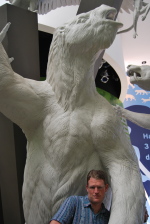
At the end of the Biomuseo tour, before the empty aquarium and non-aviary, the 100-million-dollar museum proudly declares that the creation of this little stretch of land changed the world more than any geologic development in history. And I can’t really argue the point. Who would have thought such a small strip of land could make such a difference? It then adds that we are all Panamanians now. That last bit is kind of a stretch but it does make me feel better about my missing $22.
Photo Credit: Erik Vance, Shutterstock, illustration by Jack Cook at Woods Hole Oceanographic Institution